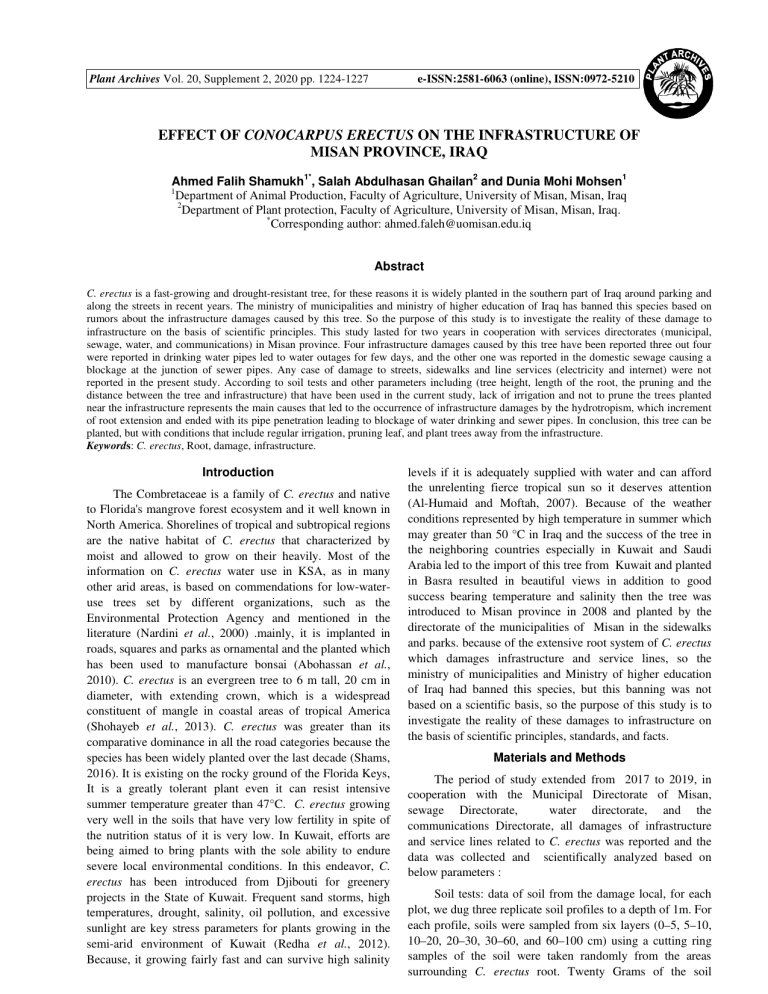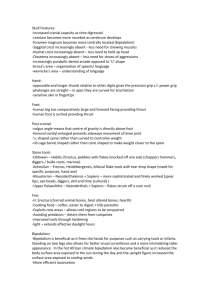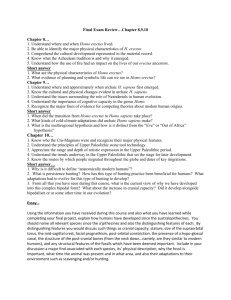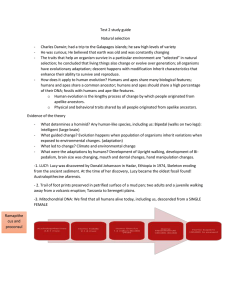
1 Plant Archives Vol. 20, Supplement 2, 2020 pp. 1224-1227 e-ISSN:2581-6063 (online), ISSN:0972-5210 EFFECT OF CONOCARPUS ERECTUS ON THE INFRASTRUCTURE OF MISAN PROVINCE, IRAQ Ahmed Falih Shamukh1*, Salah Abdulhasan Ghailan2 and Dunia Mohi Mohsen1 Department of Animal Production, Faculty of Agriculture, University of Misan, Misan, Iraq 2 Department of Plant protection, Faculty of Agriculture, University of Misan, Misan, Iraq. * Corresponding author: ahmed.faleh@uomisan.edu.iq 1 Abstract C. erectus is a fast-growing and drought-resistant tree, for these reasons it is widely planted in the southern part of Iraq around parking and along the streets in recent years. The ministry of municipalities and ministry of higher education of Iraq has banned this species based on rumors about the infrastructure damages caused by this tree. So the purpose of this study is to investigate the reality of these damage to infrastructure on the basis of scientific principles. This study lasted for two years in cooperation with services directorates (municipal, sewage, water, and communications) in Misan province. Four infrastructure damages caused by this tree have been reported three out four were reported in drinking water pipes led to water outages for few days, and the other one was reported in the domestic sewage causing a blockage at the junction of sewer pipes. Any case of damage to streets, sidewalks and line services (electricity and internet) were not reported in the present study. According to soil tests and other parameters including (tree height, length of the root, the pruning and the distance between the tree and infrastructure) that have been used in the current study, lack of irrigation and not to prune the trees planted near the infrastructure represents the main causes that led to the occurrence of infrastructure damages by the hydrotropism, which increment of root extension and ended with its pipe penetration leading to blockage of water drinking and sewer pipes. In conclusion, this tree can be planted, but with conditions that include regular irrigation, pruning leaf, and plant trees away from the infrastructure. Keywords: C. erectus, Root, damage, infrastructure. Introduction The Combretaceae is a family of C. erectus and native to Florida's mangrove forest ecosystem and it well known in North America. Shorelines of tropical and subtropical regions are the native habitat of C. erectus that characterized by moist and allowed to grow on their heavily. Most of the information on C. erectus water use in KSA, as in many other arid areas, is based on commendations for low-wateruse trees set by different organizations, such as the Environmental Protection Agency and mentioned in the literature (Nardini et al., 2000) .mainly, it is implanted in roads, squares and parks as ornamental and the planted which has been used to manufacture bonsai (Abohassan et al., 2010). C. erectus is an evergreen tree to 6 m tall, 20 cm in diameter, with extending crown, which is a widespread constituent of mangle in coastal areas of tropical America (Shohayeb et al., 2013). C. erectus was greater than its comparative dominance in all the road categories because the species has been widely planted over the last decade (Shams, 2016). It is existing on the rocky ground of the Florida Keys, It is a greatly tolerant plant even it can resist intensive summer temperature greater than 47°C. C. erectus growing very well in the soils that have very low fertility in spite of the nutrition status of it is very low. In Kuwait, efforts are being aimed to bring plants with the sole ability to endure severe local environmental conditions. In this endeavor, C. erectus has been introduced from Djibouti for greenery projects in the State of Kuwait. Frequent sand storms, high temperatures, drought, salinity, oil pollution, and excessive sunlight are key stress parameters for plants growing in the semi-arid environment of Kuwait (Redha et al., 2012). Because, it growing fairly fast and can survive high salinity levels if it is adequately supplied with water and can afford the unrelenting fierce tropical sun so it deserves attention (Al-Humaid and Moftah, 2007). Because of the weather conditions represented by high temperature in summer which may greater than 50 °C in Iraq and the success of the tree in the neighboring countries especially in Kuwait and Saudi Arabia led to the import of this tree from Kuwait and planted in Basra resulted in beautiful views in addition to good success bearing temperature and salinity then the tree was introduced to Misan province in 2008 and planted by the directorate of the municipalities of Misan in the sidewalks and parks. because of the extensive root system of C. erectus which damages infrastructure and service lines, so the ministry of municipalities and Ministry of higher education of Iraq had banned this species, but this banning was not based on a scientific basis, so the purpose of this study is to investigate the reality of these damages to infrastructure on the basis of scientific principles, standards, and facts. Materials and Methods The period of study extended from 2017 to 2019, in cooperation with the Municipal Directorate of Misan, sewage Directorate, water directorate, and the communications Directorate, all damages of infrastructure and service lines related to C. erectus was reported and the data was collected and scientifically analyzed based on below parameters : Soil tests: data of soil from the damage local, for each plot, we dug three replicate soil profiles to a depth of 1m. For each profile, soils were sampled from six layers (0–5, 5–10, 10–20, 20–30, 30–60, and 60–100 cm) using a cutting ring samples of the soil were taken randomly from the areas surrounding C. erectus root. Twenty Grams of the soil Ahmed Falih Shamukh et al. samples from various depths were collected. Then all collected samples were mixed together for each tree. Allimportant tests for the soil samples which included: EC (dc/m) and soils texture were implemented at the Sugar Company lab in Misan. Other parameters Tree height, length of the root, the pruning and the distance between the tree and infrastructure) were reported. Results According to the recorded data, the results of the current study showed that four cases of damage caused by C. erectus to the infrastructure, three cases of them were reported in drinking water pipes in residential areas (AlRessala, Al-Wahda, and Al-Shobana) led to water outages in residential areas for few days (Fig. 1, 2, 3), and one was reported in the domestic sewage (in Alsadekh sector) causing a blockage at the junction of sewer pipes (Fig. 4). Any case of damage to streets, sidewalks and line services (electricity and internet) were not reported in the present study. Results of soil tests: Three types of soil texture (clay loam, sandy loam, loam) were noticed in the studied cases. The average EC of soil was (7, 3 - 11, 4). Results of other parameters The present study revealed that the average height of C. erectus was ranging from 3.5 to 4.5 meters and the mean age of trees was (6-7) years. C. erectus trees had a mean root length (2.3 - 3.4) Meters. All trees in the studied area did not get pruning throughout the growth period and all trees were submitted to irregular Irrigation periods. Discussion Despite that a lot of people consider that C. erectus is a beautiful tree, fast growth and trimming, some of them did not advise to be planted in front of their house gardens and others decided to uproot the tree due to its influence on infrastructures and large quantities consumption of water. In contrast, others still planted it because they recognized the bad influences of the tree may attribute to wrong handling and the lack of irrigation and avoid pruning ended with roots extension and infrastructure damage. This controversy of two scenarios is motived the researchers to be subjected to these opinions to scientific criteria and in situ study to recognized the right factors underlying these views. Tree roots can conflict with many infrastructure elements, drinking water pipes and domestic sewage. Tree roots cause enormous damage to infrastructure elements each year, and repair of this damage has been costed of cities, the present study showed that extension of roots reached to 2, 7 meters and this may be beyond the damage of infrastructure elements and sewer pipes (Randrup et al., 2001). This damage may be attributed to unprofessional gardening practice that included 1225 irrigation deficit and pruning missing. The irrigation periods of the present study found to be ranged from one to three times per week and this considered as irrigation deficit because these tree needed short irrigation intervals (every day and every 2 days) to give higher values of plant height, stem diameter and number of branches than other long irrigation intervals (Al-Jamaan, 2008). Irrigation reduction encouraged the root to shoot ratio usually rise as a result of irrigation treatments largely because the decrease in shoot growth is not matched by an equivalent loss of root development. Pruning missing in cases of the current study is leading to a persistent tendency towards a positive correlation between roots and shoots, an increase in the size of tops being accompanied by an increase in the size of roots (Ong et al., 2015). Although significant variations in the relative distribution of the growth rate of tops and roots occur in nature and may readily be induced by the change in environment, the fact remains that there is a persistent positive correlation in size of tops and roots regardless of the wide variations induced by special conditions (Ong et al., 2015). In the present study, the soil textures had not been showing a noticeable reduction in the root growth of C. erectus. This may be reflected root interactions of tree areas in semi-arid environments inevitably mean a greater presence of coarse woody roots spread to deeper soil depths. Over time these roots systems will alter their environment and facilitate storage and uptake of water and nutrient availability (Archer et al., 2002). Also, another study showed compatible results with the present study that illustrated the effects of soil texture and bulk density on root growth at near-optimum soil water contents. There was another study, which nonagreeable with the present study, showed an effect of soil texture on root growth on the sandy soils reached ten times higher than on the clay soils for both species (Weemstra et al., 2017). The results of the current study showed that C. erectus seedlings tolerating high salt concentration of sodium chloride that is well-matched with another study done by (ElJuhany and Aref, 2005). Furthermore, the all abovementioned factors had been given potential effects toward increment of root extension and ended with its penetration of pipe as a global problem where it was proliferating inside sewer pipes due to hydrotropism of roots that mediated the root movement into areas of high resource (Fulgham, 2019). Conclusions The study showed the main reasons why the roots of the C. erectus have been damaged in infrastructure .here, we have to suggest some solutions to get rid of the damage, because the tree bears the environment and gives beautiful green growth. 1- Regular irrigation.so that the root does not extend too deep and cause damage to infrastructure. 2Pruning leaf to reduce water loss. 3 - plant trees away from the infrastructure, This tree can be used as a windbreaker around the cities, or forest being the tree talking of lack of water and own a powerful root and growth of its vegetative all dense. Effect of Conocarpus erectus on the infrastructure of Misan province, Iraq 1226 Table 1 : Shows soil tests. Cases Location 1 Al-Ressala 2 Al-Wahda 3 Al-Shobana 4 Al-Sadekh Species C. erectus L. C. erectus L. C. erectus L. C. erectus L. Table 2 : Shows gardening practice cases Location 1 Al-Ressala 2 Al-Wahda 3 Al-Shobana 4 Al-Sadekh Species C. erectus L. C. erectus L. C. erectus L. C. erectus L. EC(ds/m) 10.2 8.5 7.3 11.4 soil tissue clay loam Sandy loam Loam clay loam the pruning No No No No Irrigation periods (week) 1-2 1-3 1-2 1-2 Table 3 : Shows tree profile cases Location Species Age(year) Plant.ht(m) Root Length 1 2 3 4 Al-Ressala Al-Wahda Al-Shobana Al-Sadekh C. erectus L. C. erectus L. C. erectus L. C. erectus L. 7 yers 7 yers 6 yers 7 yers 4 3.9 3.5 4.2 2.8 2.6 2.3 3.4 Acknowledgement Eng. Jabar Albahadly (Engineer at the Misan water directorate). References Abohassan, A.; Tewfik, S. and El-Wakeel, A. (2010). Effect of thinning on the above ground biomass of (Conocarpus erectus L.) trees in the western region of Saudi Arabia. Journal of King Abdulaziz University: Metrology, Environment and Arid Land Agricultural Sciences, 142: 1-29. Al-Humaid, A.I. and Moftah, A.E. (2007). Effects of hydrophilic polymer on the survival of buttonwood seedlings grown under drought stress. Journal of Plant Nutrition, 30: 53-66. Al-Jamaan, S.M. (2008). Response of Conocarpus Tree Growth to Treatment of Irrigation, Pruning and Paclobutrazol. M.Sc. Thesis, Fac. Food & Agric. Sci., King Saud Univ., 188p. Archer, N.; Quinton, J.N. and Hess, T. (2002). Below-ground relationships of soil texture, roots and hydraulic conductivity in two-phase mosaic vegetation in Southeast Spain. Journal of Arid Environments, 52: 535-553. El-Juhany, L.I. and Aref, I.M. (2005). Interactive effects of low water supply and high salt concentration on the growth and dry matter partitioning of Conocarpus erectus seedlings. Saudi Journal of Biological Sciences, 12: 147-157. Depth of damage(.m) 1.5 1.5 1.25 3 Fulgham, D.T. (2019). Growth of Clonal Red Maples on Varying Site Conditions in Mississippi and Response to Pneumatic Fracturing and Liquid Injection, Mississippi State University. Nardini, A.; Salleo, S.; Gullo, M.L. and Pitt, F. (2000). Different responses to drought and freeze stress of Quercus ilex L. growing along a latitudinal gradient. Plant ecology, 148: 139-147. Ong, C.K.; Black, C. and Wilson, J. (2015). Tree-crop interactions: agroforestry in a changing climate, CABI. Randrup, T.; Mcpherson, E. and Costello, L. (2001). A review of tree root conflicts with sidewalks, curbs, and roads. Urban Ecosystems, 5: 209-225. Redha, A.; Suleman, P.; Al-Hasan, R. and Afzal, M. (2012). Responses of Conocarpus lancifolius to environmental stress: a case study in the semi-arid land of Kuwait. Phyton, 81: 181-190. Shams, Z.I. (2016). Changes in diversity and composition of flora along a corridor of different land uses in Karachi over 20 years: Causes and implications. Urban forestry & urban greening, 17: 71-79. Shohayeb, M.; Abdel-Hameed, E. and Bazaid, S. (2013). Antimicrobial activity of tannins and extracts of different parts of Conocarpus erectus L. Int J Pharm Bio Sci., 3: 544-553. Weemstra, M.; Sterck, F.J.; Visser, E.J.; Kuyper, T.W.; Goudzwaard, L. and Mommer, L. (2017). Fine-root trait plasticity of beech (Fagus sylvatica) and spruce (Picea abies) forests on two contrasting soils. Plant and Soil, 415: 175-188. Ahmed Falih Shamukh et al. 1227



